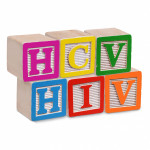People with HIV who begin antiretroviral (ARV) treatment with a higher CD4 count and a higher CD4 cell to CD8 cell ratio are more likely to experience what is known as immune recovery, or two successive CD4 counts above 500, aidsmap reports.
Publishing their findings in the journal AIDS, researchers analyzed data from the French Hospital Database on HIV regarding people who began their first ARV regimen between 2006 and 2014 and then developed a fully suppressed viral load that they maintained for at least six years. The study cohort members also started HIV treatment with a CD4 count below 500 and higher than 50. They also had in their records at least one CD4 to CD8 ratio test result from prior to initiating ARVs.
A total of 6,050 people in the database met these criteria. When they started ARVs, the median age of the cohort members was 38.6, the median viral load was 52,257, the median CD4 count was 275 and the median CD4 to CD8 ratio was 0.3.
A healthy CD4 to CD8 ratio is between 1 and 4, while a healthy CD4 count is generally higher than 500.
A total of 69.7 percent of the cohort members experienced immune recovery along with a sustained undetectable viral load through a six-year period. The study authors found that when they excluded those who died or were lost to follow-up, just 12.1 percent of the cohort did not experience immune recovery after six years of treatment.
Among those who started treatment with 350 to 499 CD4s, 87.1 percent experienced immune recovery, compared with 67.6 percent of those with 200 to 349 CD4s, 38.2 percent of those with 100 to 199 CD4s and 19.9 percent of those with 50 to 99 CD4s.
As for those who started treatment with a CD4 to CD8 ratio of greater than 1, 82.5 percent experienced immune recovery, compared with 71.7 percent of those with a ratio of 0.30 to 0.5 and 47.6 percent of those with a ratio of less than 0.3.
Other factors associated with not achieving immune recovery included: being older than 60 years old, having hepatitis B or C virus (HBV/HCV) coinfection, having AIDS, starting treatment earlier during the study period and starting a protease inhibitor–based ARV regimen compared with starting a non-nucleoside reverse transcriptase inhibitor (NNRTI)–based regimen.
To read the aidsmap article, click here.
To read the study abstract, click here.







1 Comment
1 Comment